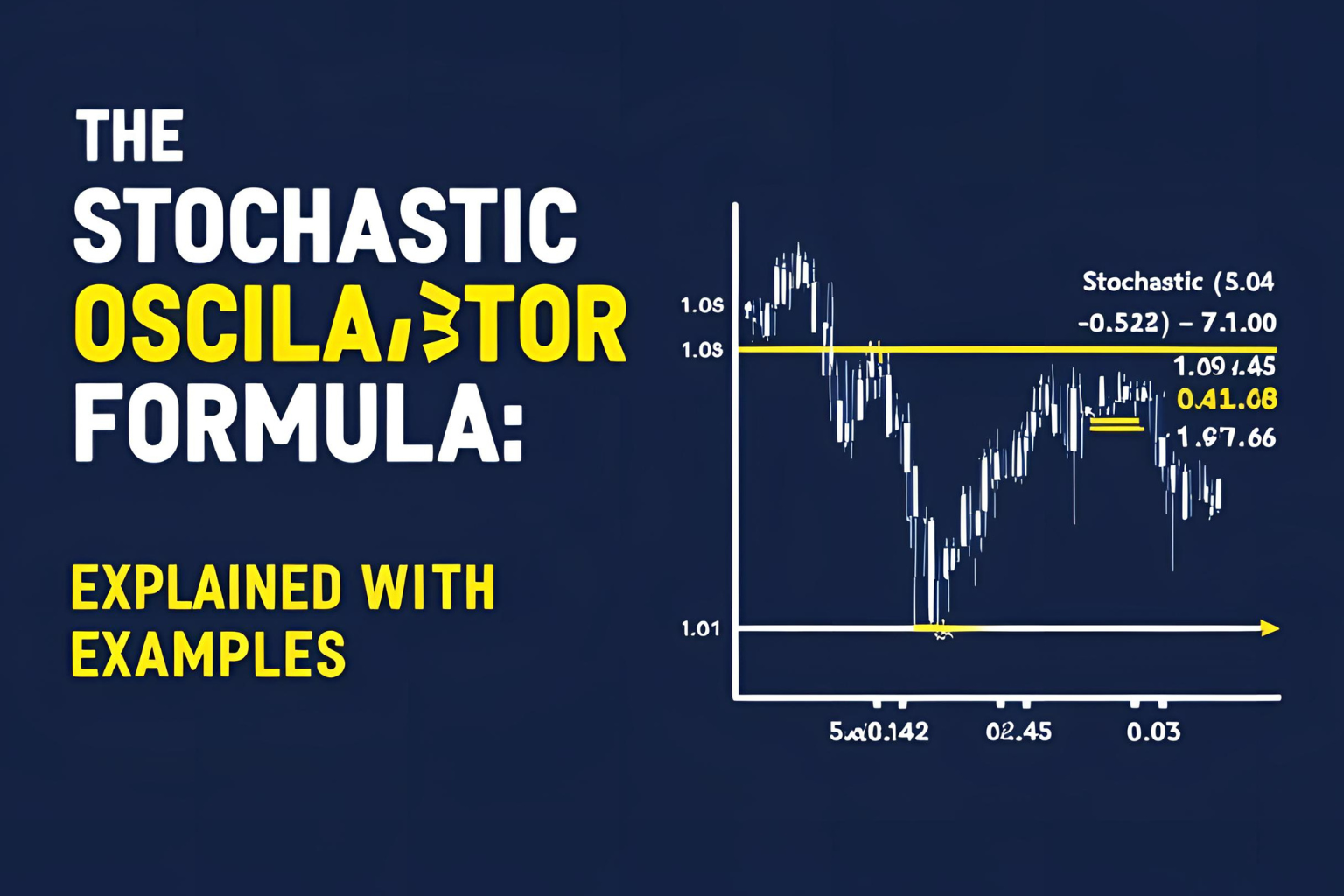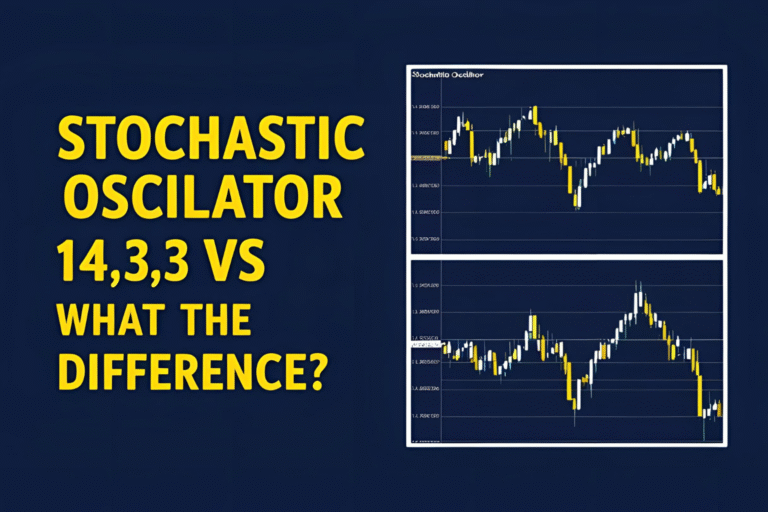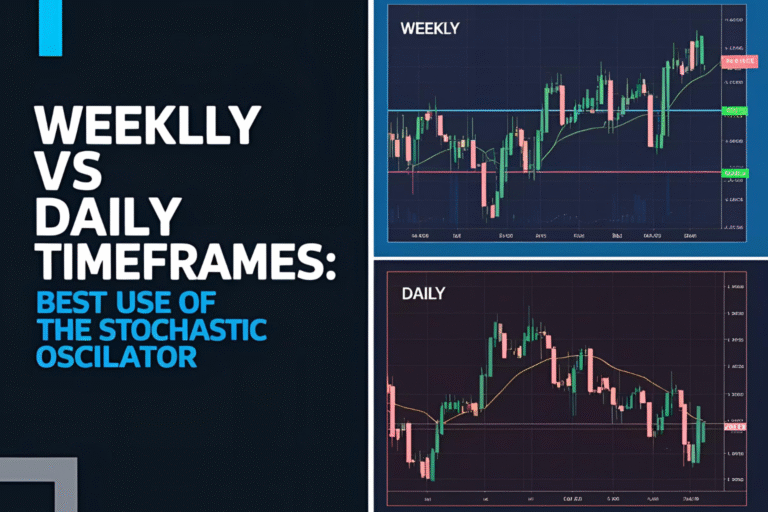The Stochastic Oscillator Formula: Explained with Examples
Introduction
If you’re using the stochastic oscillator, understanding its mathematical foundation can help you trust its signals even more. While most trading platforms calculate it automatically, knowing the stochastic oscillator formula helps you interpret crossovers, adjust settings, and spot market conditions with more confidence.
What Is the Stochastic Oscillator?
The stochastic oscillator is a momentum indicator that compares a security’s closing price to its recent high-low range. It helps identify overbought and oversold conditions and can signal trend reversals.
The indicator has two main components:
- %K line: The current momentum reading
- %D line: A 3-period simple moving average (SMA) of %K, used as a signal line
The Stochastic Oscillator Formula
✅ %K Line Formula:
%K=(Current Close−Lowest Low)(Highest High−Lowest Low)×100\%K = \frac{(Current\ Close – Lowest\ Low)}{(Highest\ High – Lowest\ Low)} \times 100%K=(Highest High−Lowest Low)(Current Close−Lowest Low)×100
- Current Close: The most recent closing price
- Lowest Low: The lowest price in the selected period (e.g., 14 days)
- Highest High: The highest price in the selected period (e.g., 14 days)
✅ %D Line Formula:
%D=SMA(%K,3)\%D = SMA(\%K, 3)%D=SMA(%K,3)
This means %D is the simple moving average of the last 3 %K values.
Example Calculation (14,3,3 Setting)
Let’s say the following:
- Current Close: $48
- Lowest Low (last 14 periods): $40
- Highest High (last 14 periods): $50
%K=(48−40)(50−40)×100=810×100=80\%K = \frac{(48 – 40)}{(50 – 40)} \times 100 = \frac{8}{10} \times 100 = 80%K=(50−40)(48−40)×100=108×100=80
Assume the last two %K values were 72 and 76: %D=(72+76+80)/3=76\%D = (72 + 76 + 80) / 3 = 76%D=(72+76+80)/3=76
So:
- %K = 80
- %D = 76
This would likely indicate an overbought condition.
What the Values Mean
- %K > %D: Momentum is rising → Potential buy signal
- %K < %D: Momentum is declining → Potential sell signal
- Both above 80: Overbought zone
- Both below 20: Oversold zone
Adjusting the Formula for Strategy
- Use 14,3,3 for smoother, more traditional analysis
- Use 5,3,3 for quicker reactions (more sensitive)
- Adjust period to match your trading style (scalping vs swing)
Conclusion
The stochastic oscillator formula is straightforward but powerful. By measuring where the current price sits within a recent high-low range, it provides insights into momentum and potential reversals. Learning how %K and %D are calculated helps you better interpret signals and fine-tune your trading strategy.
FAQs
Q1. What does the stochastic oscillator formula measure?
It measures the closing price’s position within the recent high-low range.
Q2. Why is %D a moving average of %K?
To smooth out the volatility and create a clearer signal line.
Q3. Can I use different period settings for the formula?
Yes, popular variations include 5,3,3 and 14,3,3.
Q4. Is understanding the formula necessary for traders?
It’s not required, but it helps improve confidence and strategy development.
Q5. Do all platforms use the same stochastic formula?
Most follow the standard method, but some may use exponential smoothing instead of SMA for %D.




